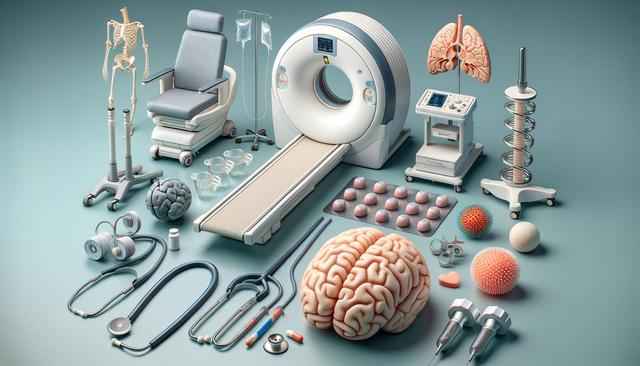Understanding the Scope of Stroke Rehabilitation
After a stroke, the brain undergoes significant changes, often leading to physical, cognitive, and emotional challenges. Stroke therapy is designed to help individuals regain lost functions and adapt to new limitations. The scope of rehabilitation varies depending on the severity and location of the stroke, and a personalized approach is essential. Rehabilitation typically begins in the hospital and continues through outpatient or home-based programs. The goal is to support neuroplasticity—the brain’s ability to rewire itself—by promoting repetitive and task-specific training. A comprehensive therapy plan often involves a team of specialists such as physiotherapists, occupational therapists, speech-language pathologists, and neuropsychologists.
The early stages of stroke recovery are particularly critical. Therapies initiated within the first few weeks post-stroke are shown to have a more significant impact, as the brain is more receptive to change. However, recovery can be a long-term process, and progress continues with sustained effort. Stroke survivors may experience improvement over months or even years, making consistent therapy important for maintaining and enhancing gains achieved during initial rehabilitation phases.
Physical Therapy and Mobility Restoration
Physical therapy is a cornerstone of stroke rehabilitation, focusing on restoring mobility, strength, and coordination. The primary goal is to help individuals regain independence in daily activities, such as walking, transferring, and balancing. Therapists use a variety of techniques tailored to each patient’s condition. These may include:
- Range-of-motion exercises to maintain or improve joint flexibility
- Strength training to rebuild muscle power
- Balance and gait training to enhance walking abilities
- Functional mobility exercises like standing, sitting, and stair navigation
Assistive devices such as walkers, braces, or canes may also be introduced to support safe mobility. In some cases, advanced technologies such as robotic-assisted therapy or virtual reality-based exercises can further enhance outcomes by providing interactive and engaging rehabilitation experiences. The integration of these tools depends on access, affordability, and the individual’s specific needs and goals.
Occupational Therapy for Daily Living Skills
Occupational therapy plays a pivotal role in helping stroke survivors reclaim their ability to perform everyday tasks. These activities can include dressing, bathing, cooking, or managing finances. Therapists assess the individual’s physical and cognitive limitations and develop strategies to overcome them. By focusing on real-world tasks, occupational therapy enhances the person’s ability to live independently and improves overall quality of life.
Some common interventions include:
- Adaptive techniques to simplify complex tasks
- Use of assistive tools like modified utensils or grab bars
- Home modifications to reduce fall risks and enhance accessibility
- Training in energy conservation and task prioritization
Cognitive and perceptual training is also a part of occupational therapy. Stroke survivors may have difficulty with memory, attention, or problem-solving, all of which impact their ability to function independently. Addressing these challenges through targeted exercises helps build confidence and functionality over time.
Speech and Language Therapy
For individuals who experience communication or swallowing difficulties after a stroke, speech-language therapy is essential. Aphasia, a common post-stroke condition, can impact the ability to speak, understand, read, or write. Speech-language pathologists work closely with patients to improve language skills and develop alternative ways to communicate, such as using gestures or communication boards.
Therapy may also focus on:
- Improving articulation and clarity of speech
- Enhancing comprehension and expression
- Strengthening muscles involved in swallowing (dysphagia therapy)
- Developing compensatory techniques to manage persistent deficits
Consistent practice, family involvement, and the use of visual aids or mobile apps can significantly contribute to progress. Speech therapy not only improves communication but also plays a crucial role in social reintegration and emotional well-being.
Emotional and Psychological Support
Stroke recovery is not only physical but also deeply emotional. Many individuals face anxiety, depression, or frustration as they adjust to life after a stroke. Psychological support is a vital part of comprehensive stroke therapy, helping survivors cope with these changes and maintain motivation throughout their recovery journey. Counseling, support groups, and psychiatric care can all contribute positively.
In addition to professional support, the role of caregivers and family members is crucial. They provide encouragement, assist with daily tasks, and help monitor progress. Educating caregivers about stroke recovery can improve outcomes and reduce caregiver burden. Techniques such as stress management, mindfulness, and resilience training can benefit both survivors and their support networks.
Furthermore, setting realistic goals and celebrating small achievements can help maintain a positive outlook. Stroke recovery is often a long and challenging road, but emotional resilience and support systems make a significant difference in the overall experience and outcomes.
Conclusion: Personalized, Consistent Therapy Leads to Progress
Effective stroke therapy requires a personalized, multidisciplinary approach that addresses physical, cognitive, and emotional needs. By combining physical rehabilitation, occupational therapy, speech-language therapy, and psychological support, stroke survivors can make meaningful strides in their recovery. Consistency, early intervention, and community or family involvement are key components in optimizing outcomes. While recovery timelines vary, a structured and supportive therapy plan offers individuals the opportunity to regain independence, improve quality of life, and adapt to a new normal with confidence and dignity.






